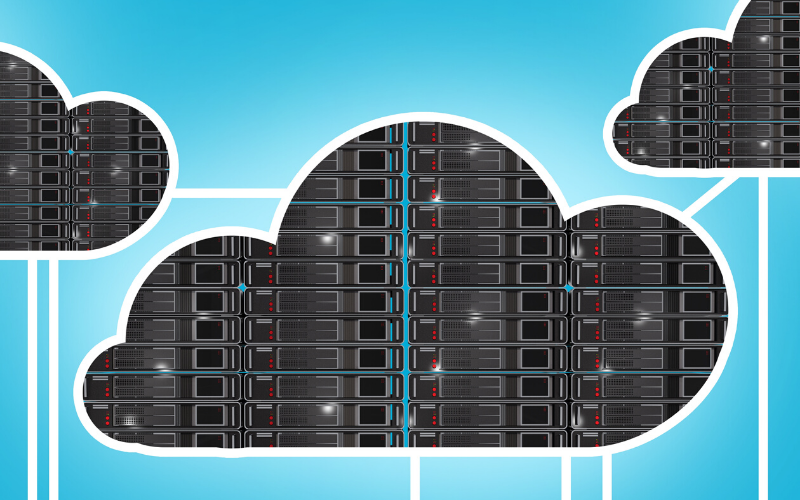In New Zealand, as I write, we remain in COVID-19 lockdown. Like people everywhere I am working from a makeshift office, hastily put together that will have to do until we are out of this. I cannot help but be drawn by the similarities of my own circumstances with that of many businesses around the world who are in their own form of lockdown because of their dependency on physical computer servers.
Any server that is not running on public cloud is running in lockdown. A business that relies on a physical server is also running in lockdown. There was a time when there was no other option. That is not the case now. That has not been the case for years.
It will be incomprehensible that we once built servers
It will soon be incomprehensible to our graduate hires that we once built email servers. Even to me, someone who has worked in IT for over 30 years, it is strange to think we did this until a few years ago.
Strange that we physically assembled a server at our office where we loaded the server software. A strange process that was mostly days of screwdriver assembly and ‘click-next’ banality, after which the server was ready for its place of work – the client’s premises. We would load the completed server in a car, drive to the client’s premises and leave it there. Often alone.
The process of procurement, assembly, configuration and delivery would take days and weeks. That could be months if you got unlucky with the incredibly complex supply chain involved. Extra memory or disk space would be back ordered, and the server build shoe-horned onto what we had.
Your server is in a bubble and it’s probably an unhealthy one
Once delivered, the server would be setup in its own bubble. Often this would be an unhealthy environment, more likely to be hidden in the corner of the office, but the best available under the circumstances. Cupboards, that were distinguished by little more than a battery backed power supply, became computer rooms. For a brief, and embarrassing period, people started calling their larger cupboards data centres. Temperature control, redundancy and physical security rarely existed in any meaningful way.
Post-delivery, the on-prem server was not entirely abandoned. We would regularly ‘phone-in’ to the server to ask, ‘how it was doing’. Sometimes the server failed, and a rescue mission would be required. We used the term, ‘Business Continuity’, as a euphemism for ‘Disaster Recovery’ because every business continuity event involved some level of disaster.
The finances don’t stack up
On-prem servers are Capex purchases. The brief from clients was always to sweat the assets and stretch the lifetime of the servers as far as possible, thereby maximising return on investment. This meant running the server past its recommended life through disruptive upgrades and re-configurations. This was all played out at the client’s premises. Upgrades could take as much planning as the original deployment. Changes were budgeted in increments of thousands and were irreversible.
Business demand for capacity expands every year. Consequently, a server’s last years were dogged by under-performance and capacity juggling.
That was the past. We have not sold a server in years. Good riddance.
We are in the cloud and out of lockdown
We are in the cloud now, out of lockdown on Amazon’s AWS and Microsoft’s Office 365 and Azure. Life is great.
We can stand up a server in minutes and not days and weeks.
We can upgrade that server in minutes and not weeks or months.
We can ‘try-out’ more memory for a couple of days to see exactly what difference it makes.
Costs come under Opex rather than Capex. Changes are budgeted in increments of hundreds of dollars and can be rolled back if ineffective.
Cloud servers have uptimes that are untouchable for on-premises servers.
Once in the cloud, business continuity is a real thing.
We can move a huge server to new equipment within an hour.
Cloud servers have security standards – physical and electronic – that were previously unobtainable.
Inappropriate working conditions, fragile supply chains, occasional check-ins, rescue missions, overtaxed assets are all things of the past.
Get your business and server out of lockdown
We cannot tell how long we will be in lockdown. But when we do get out, one of the first actions should be to ‘free’ your business and server from its own lockdown. Get them into the cloud. Your servers will love you for it and repay your investment immediately and repeatedly.
Most importantly, getting your servers out of lockdown will make your own lockdowns so much less disruptive. Those who have made the change to public cloud – AWS, Office365 and Azure - already know the benefits.
There has never been a smarter time for your company to get out of lockdown and into the cloud.
Stop missing out
If you want to discuss how to get in the cloud, please contact Priscila Bernardes by emailing priscila.bernardes@lancom.co.nz or by calling 022 6578158.





